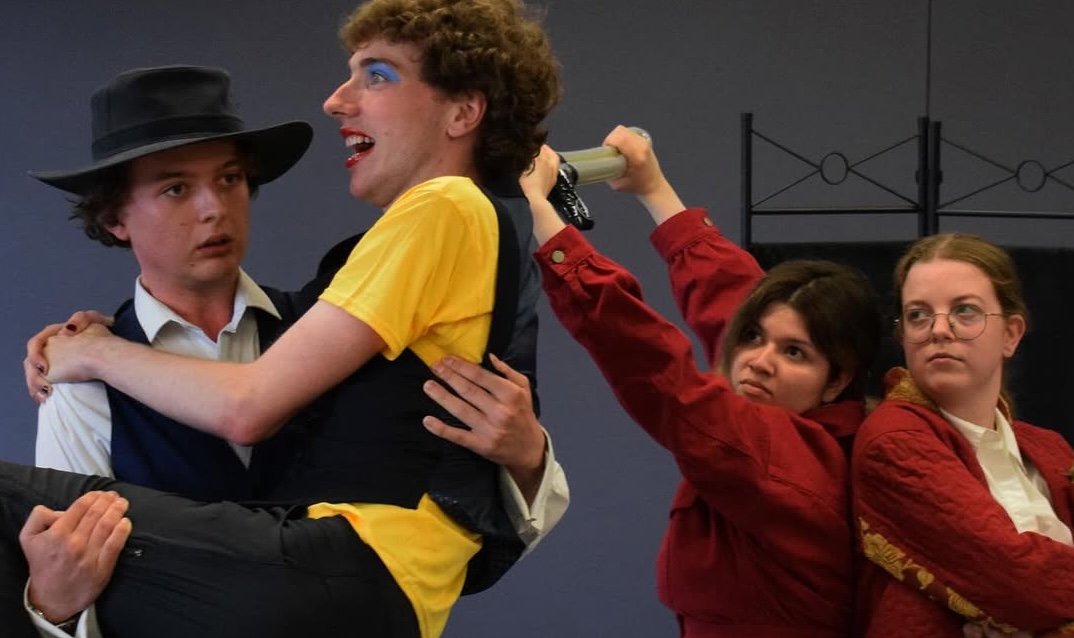Turn Shakespeare’s best-known tragedy into a pantomime? Oh yes, they did. (Very) loosely based on the plot of Romeo And Juliet, this entertaining show features the requisite quantities of cheering, booing and “He’s behind you!”, alongside go-big-or-go-home characters and the pace and energy needed to match them.
As a concept, a pantomime R&J works fine. Tybalt plays the part of chief baddie, notable for both showy uniform and stagey entrances, while Benvolio, with his sleeveless jacket and Alpine hat, looks like an incongruous panto cross between Robin Hood and William Tell. Paris is endearingly needy, begging us to cheer each time he appears yet bashful when we do, and there’s fun to be had with the multiple roles he and most of the other actors play. But top honours must go to the Nurse – the nearest thing this pantomime has to a dame – whose mop of hair and flowery blouse is the very expression of comic joy.
Before any of that, though, we meet the sports-jacketed artistic director of the St Andrews Pantomime Club, who remains on-stage throughout the performance as a signal that there’s something meta going on. We’re not just seeing the story of Romeo and Juliet; there’s an undercurrent of drama within the club itself, with the two leading actors at loggerheads and dark mutterings of the fall-out from last year. The actress playing Juliet misses no opportunity to upstage her co-stars, while the hair-tossing, cut-off-jean-toting Romeo (also played by a woman, as panto tradition demands) has plentiful main-character energy of his/her own.
The cast-versus-cast shenanigans have comic potential, but feel relatively under-exploited. This is a complicated concept – real-life actors playing fictional actors playing pantomime versions of familiar roles – and the boundary between the “actors” and the characters they’re playing often grows blurred. At times I found myself confused about which of the two stories we were in, and while I think the warring actors ended up doing some star-crossed loving themselves, I struggled to follow a plot twist that largely happened off-stage.
There are a few funny “goes wrong” moments – the mixed-up balcony scene is especially inspired – and the death of Tybalt is an overblown highlight. So there’s a lot to enjoy in Pantomeo And Juliet, and a little more clarity around the backstage personas would elevate it still further. After success in 2024 with panto Macbeth, I can’t wait to see which Bardic classic gets the treatment at next year’s Fringe.


Comments